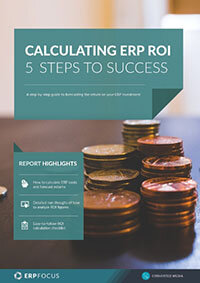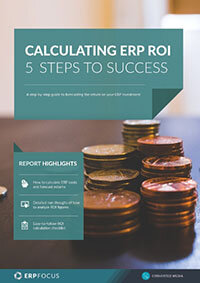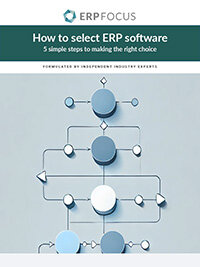A guide to ERP useful life and how to calculate it
Our ERP systems are a tool we use to help our business and like any tool, there will come a point when they are no longer valuable. How do we know when that moment arrives? What options might we use?
Take the original cost of your ERP. Add to it the money spent on hardware and network systems and the costs to begin using the system. Add now the annual cost to keep the ERP running. Then add up the money value or that same ERP for your business year by year. Chart the money going out and the value coming in.
You might see the money out is higher at first but you should see the value coming in pass the money out soon. If you see the money out exceed the incoming value after a few years that ERP is beyond its useful life.
This is not hard science. Were you going to upgrade your network anyway and that cost might not be related to ERP? You are not contractually liable to pay for ongoing support. But, would your value diminish if you did not?
The impact of modern technology on ERP useful life
The ERP software industry is much more advanced than it was 25 years ago. The weaker competitors that did not keep their products up-to-date are mostly gone. If you choose an ERP provider that will stay in business and upgrade their products along with improvements in hardware and software, your useful life might be infinite as long as your requirements remain consistent.
You can help yourself improve the life of your ERP too. Keep paying for annual support and upgrades. Your provider should be busy making improvements you and others of their customers ask for. They should fix bugs and other problems quickly and regularly. As long as you understand what changed and actually install the new version it is available to use.
Upgrading processes and the effect on useful life
Next, you might need to upgrade some internal processes to take advantage of the software change. Pay attention to your ERP revisions and use what makes value for your business. Basic actions you can take include:
- Keeping your infrastructure up-to-date. If users complain about the speed of your ERP, it could be your own fault.
- Looking for third party customizations and integrations that you can use to improve your processes and better your bottom line. While your in-house ERP team might manage just fine, there is a whole world of developers whose ideas can help you - seek them out. Since your ERP runs using standard web systems, man third party systems can be connected easily to your ERP.
- Use business intelligence and workflow tools and keep looking for more ways to make optimal choices faster and at the lowest possible level.
Another way to look at useful life is to study your local tax rules. Many tax authorities define a useful life as the number of years to depreciate an asset. That is the lazy way. Use your ERP to add value and never stop looking for more value.
Free white paper

Calculating ERP ROI: 5 steps to success
Calculate your new ERP's financial benefits with this comprehensive guide

Featured white papers
-

ERP Software Pricing Guide
Get the latest pricing information on over 80 popular ERP systems, and learn how to budget for your ERP project in our free guide
Download -

Calculating ERP ROI: 5 steps to success
Calculate your new ERP's financial benefits with this comprehensive guide
Download -

How to Select ERP
Learn to select your ERP in 5 easy steps by following our expert's advice
Download
Related articles
-

Top 10 ERP selection criteria (including checklist)
The most important ERP selection criteria you should keep in mind during your selection process.
-

Secret KPI: Why Your ERP Implementation Team Matters More Than Software
Learn how Godlan ensures successful ERP implementation for manufacturers with proven strategies &...
-

How to conduct a thorough ERP audit
The types of ERP audit, and step-by-step instructions on how to audit your ERP system

